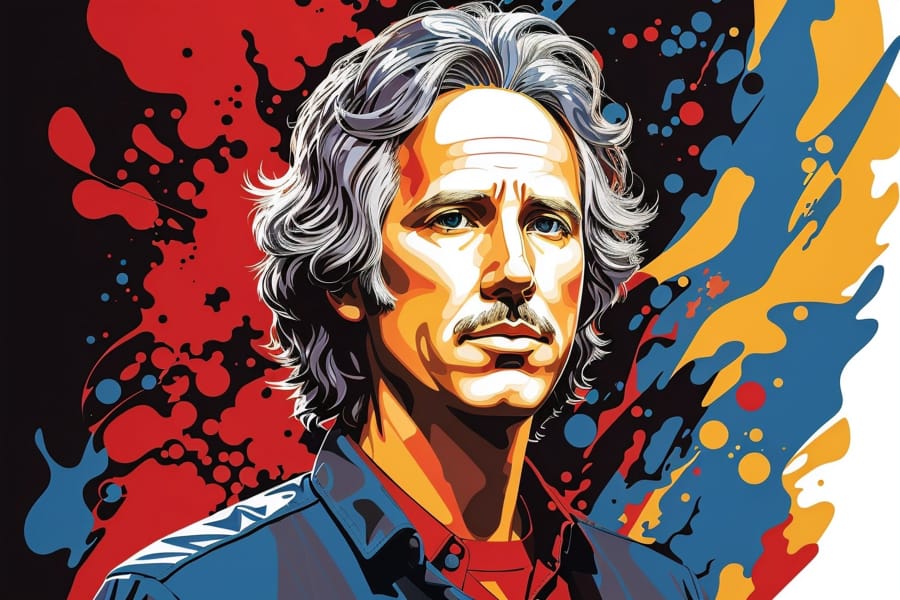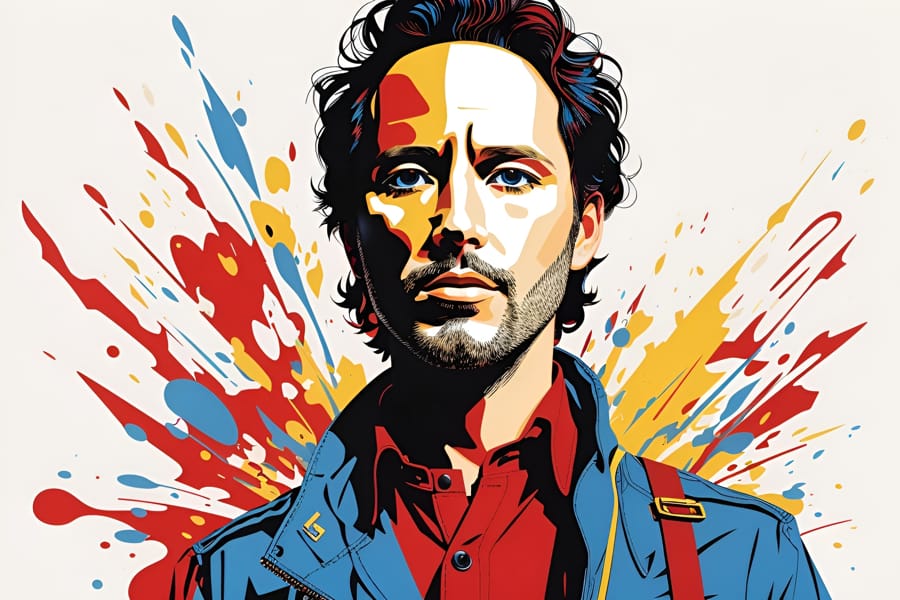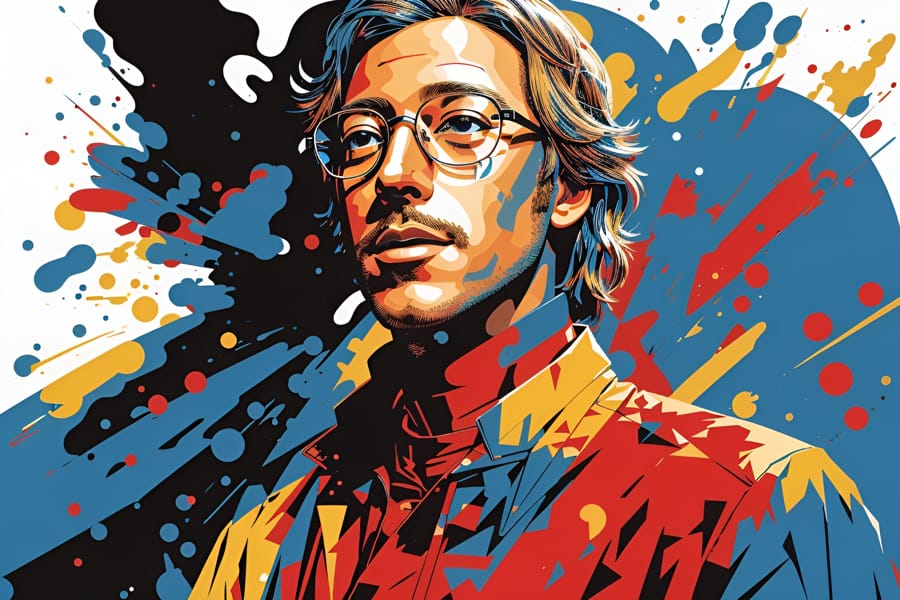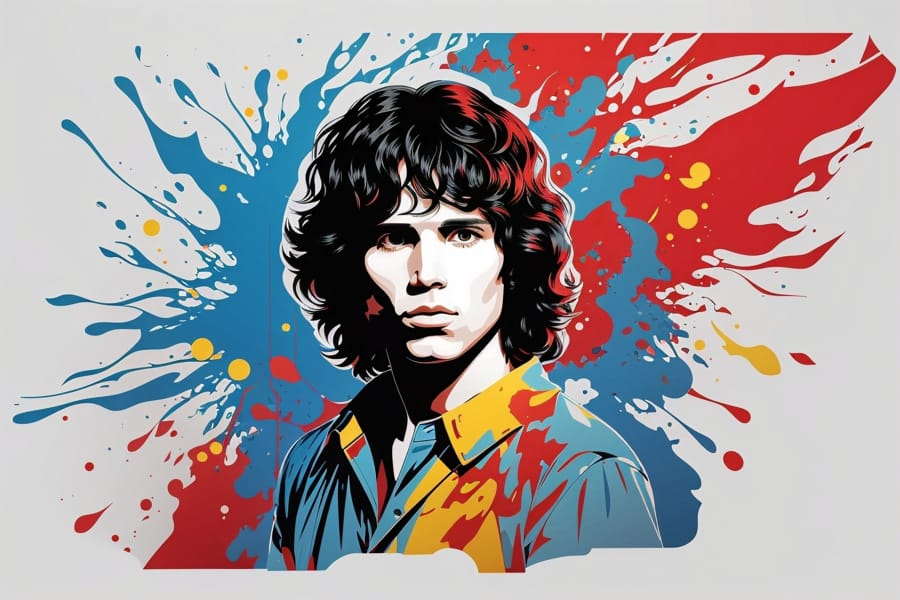
John Densmore was the drummer for The Doors from its formation in 1965 to its end in 1973. This is what he is best known for, but he has also worked as a dancer, actor, playwright and author.
Family life and influences
Born John Paul Densmore in December 1944, John Densmore played piano, drumming in a marching band for his school in Los Angeles. His parents, Ray and Margaret Densmore, were Catholic and lived in Santa Monica, California. Even as a child, John loved improvising on piano tunes that he learnt, but when considering a second instrument, he didn’t originally choose the drums.
In fact, John wanted to play the clarinet, but was disallowed from doing so as he had braces, meaning that his orthodontist forbade him any attempts to wrap his mouth around reed instruments. Luckily for us, he didn’t disobey his orthodontist, and chose the drums as his instrument instead.
In his teenage years, John Densmore was inspired by Elvin Jones’s playing in John Coltrane’s band, and particularly enjoyed jazz music, a style that expresses itself in a lot of The Doors’ music.
Early Career and The Doors
Densmore met Robby Krieger whilst they were at UCLA together, and they formed ‘The Psychedelic rangers’. Densmore then joined Ray Manzarek, Manzarek’s two brothers and Jim Morrison in ‘Rick and the Ravens’, but when Manzarek’s brothers left in 1965, Krieger joined, and the four of them formed The Doors.
Densmore in fact quit the band at one point, as a reaction to Jim Morrison’s worsening depression, addictions, and self-destructive behaviour. However, the next day he returned. Krieger and Manzarek were resistant to his urges for the band to stop touring, but after a disastrous concert in 1970, they finally agreed with Densmore.
Upon Jim Morrison’s death, the group played as a trio until their dissolution in 1973.
Career after The Doors
John Densmore formed the Butts Band in 1973 with Robby Krieger, but this was short-lived; the group disbanded in 1975. After this, Densmore freestyled as a solo artist – quite literally. He became a dancer, touring for two years, and in 1984 went on to screenplay, performing at the La Mama Theatre in New York.
From 1973 to the present, John sporadically wrote and published some plays and books, and famously filed a lawsuit against Krieger and Manzarek, who were using The Doors branding in a 21st century revival of the group. He won this case, and in ‘The Doors Unhinged’ (2013), reveals his victorious fight against Manzarek and Krieger to stop them using The Doors’ branding. The book also explains his stand against commercialisation, refusing to allow multinationals such as Cadillac and Buick the use of The Doors’ songs.
Relationships
John Desmore has been married three times, and had many relationships overall. He had a brief encounter with Pamela Courson in 1966, although she is better remembered for being Jim Morrison’s girlfriend. He then met Julia Brose in 1967, and during their relationship, Julia found out that she was pregnant. The couple had an abortion in Mexico whilst The Doors were on tour there, and John married her in 1970 with Robby and Lynne Krieger as best man and bridesmaid. However, their marriage was brief, and they separated in 1972.
A few years following the divorce, John married Debbie Fife, but this relationship didn’t last either, and they divorced a few years later.
Next, John Densmore married actress Leslie Neale in 1990, and they had one daughter. Unfortunately, they did separate in 2006 due to irreconcilable differences.
Currently, Densmore is in a relationship with Ildiko Von Somogyi, and has been since 2012.
Legacy
In 2010, Modern Drummer magazine noted that Densmore’s explorations helped to give The Doors’ music its colour and flair:
“There are many reasons to love this slyly inventive, often underrated drummer.”
John Densmore is still active, sharing his political views with the world, and revisiting his time in The Doors. In 2010 he published ‘The Doors Unhinged: Jim Morrison’s Legacy Goes on Trial’, the story of The Doors who, after Jim Morrison’s death, began to unravel at the seams, eventually leading to a court case which split them.


